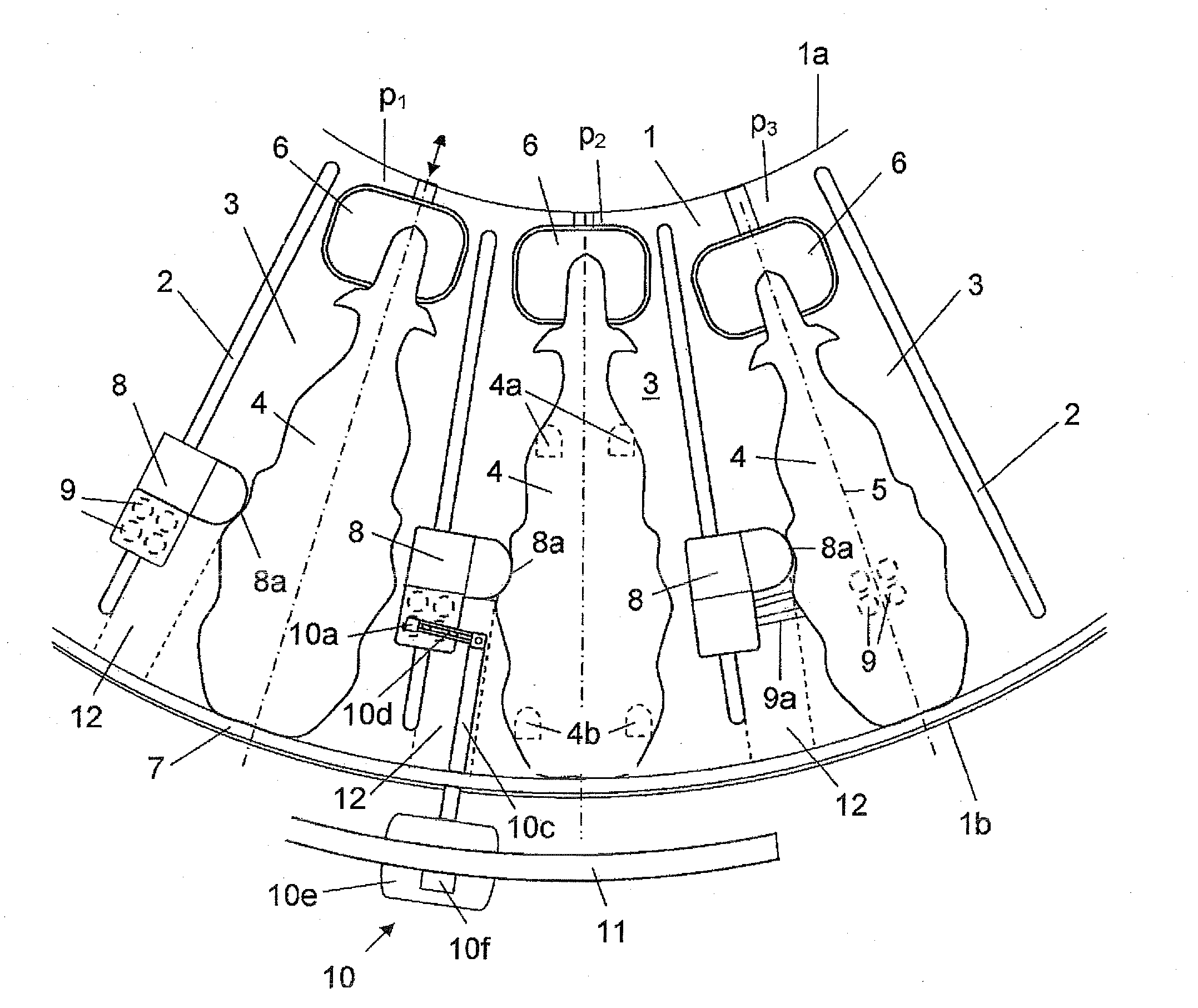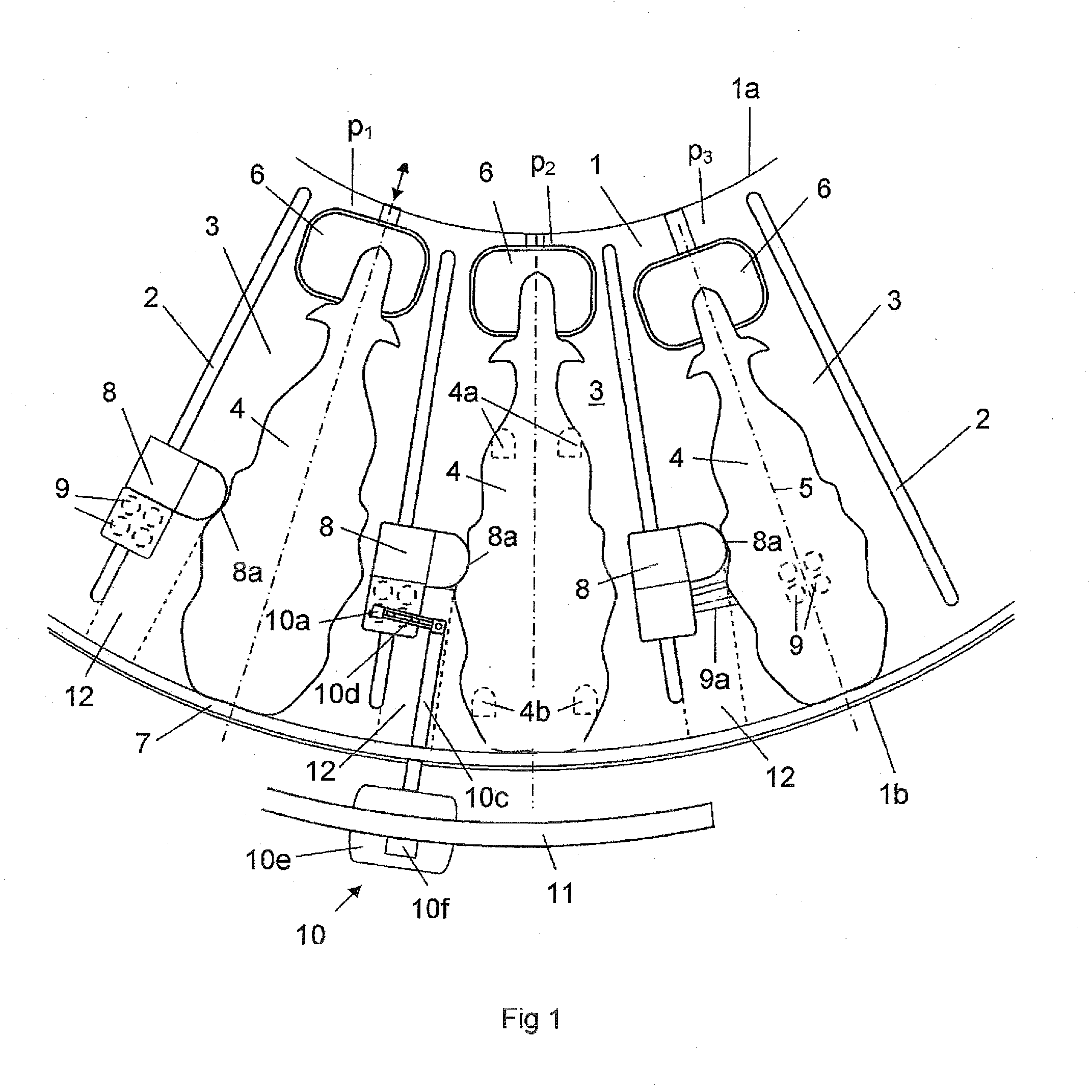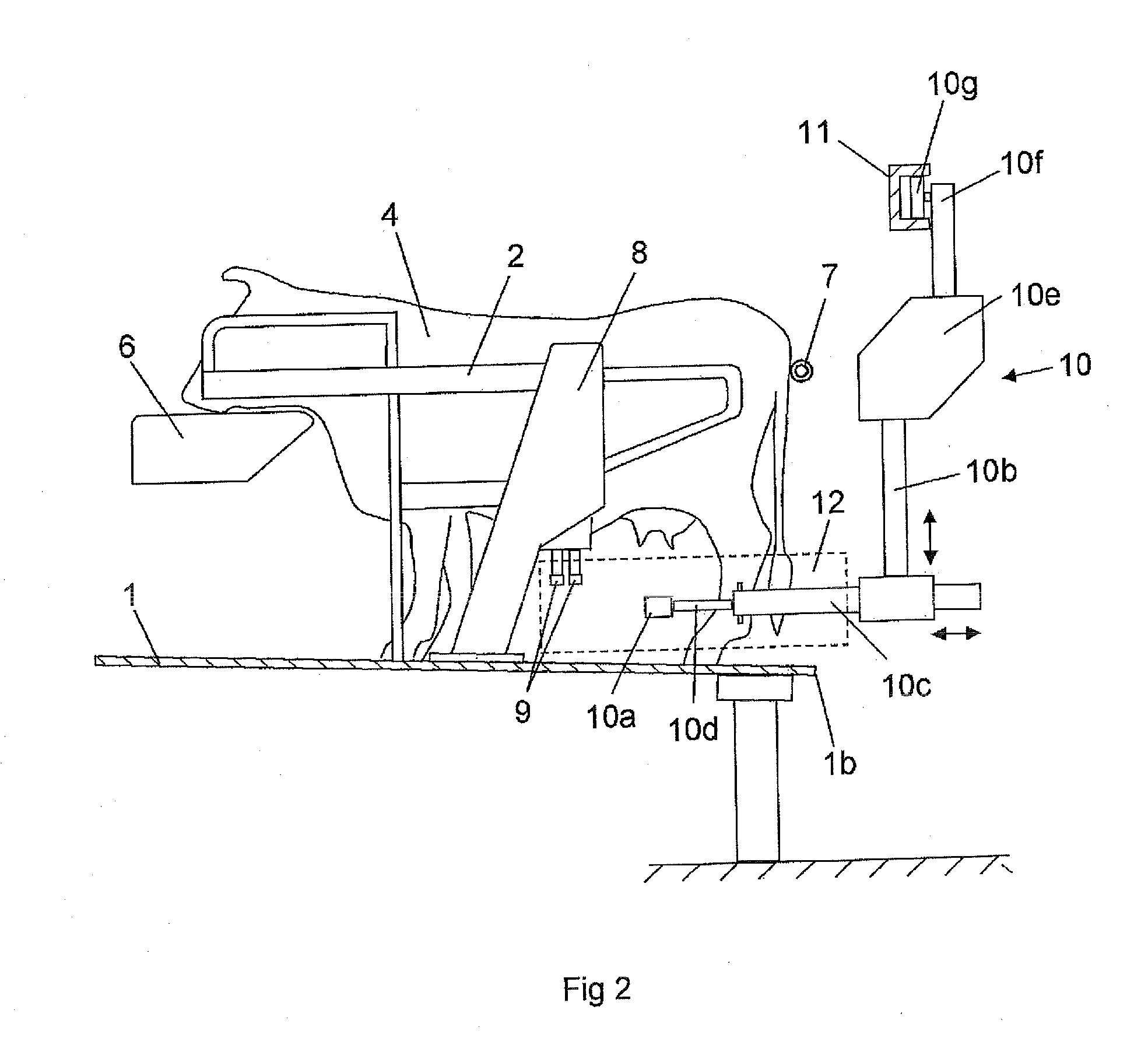Rotary parlour arranged to house animals to be milked
- Summary
- Abstract
- Description
- Claims
- Application Information
AI Technical Summary
Benefits of technology
Problems solved by technology
Method used
Image
Examples
Embodiment Construction
[0025]FIG. 1 shows a part of an annular rotary platform 1. The platform 1 is provided with a plurality of side wall elements 2 each having a substantially radial extension on the platform 1. The side wall elements 2 divide the annular platform into a plurality of milking stalls. FIG. 1 shows three of the milking stalls 3 on the rotary platform 1. A cow 4 is standing in the respective milking stall 3. The positions of the front legs 4a and the rear legs 4b of the cow 4 in one of the milking stalls 3 are indicated. The cows 4 are here standing in a substantially radial direction on the annular platform 1 with the heads at the vicinity of a radial inner edge portion 1 a of the platform 1. The longitudinal axes 5 through the cows 4 are indicated.
[0026]Each milking stall 3 comprises a movably arranged feeding trough 6. A rump rail 7 is arranged at a distance above a radial outer edge portion 1b of the platform 1. The rump rail 7 is adapted to define the positions of the rear portions of ...
PUM
 Login to View More
Login to View More Abstract
Description
Claims
Application Information
 Login to View More
Login to View More - R&D
- Intellectual Property
- Life Sciences
- Materials
- Tech Scout
- Unparalleled Data Quality
- Higher Quality Content
- 60% Fewer Hallucinations
Browse by: Latest US Patents, China's latest patents, Technical Efficacy Thesaurus, Application Domain, Technology Topic, Popular Technical Reports.
© 2025 PatSnap. All rights reserved.Legal|Privacy policy|Modern Slavery Act Transparency Statement|Sitemap|About US| Contact US: help@patsnap.com



